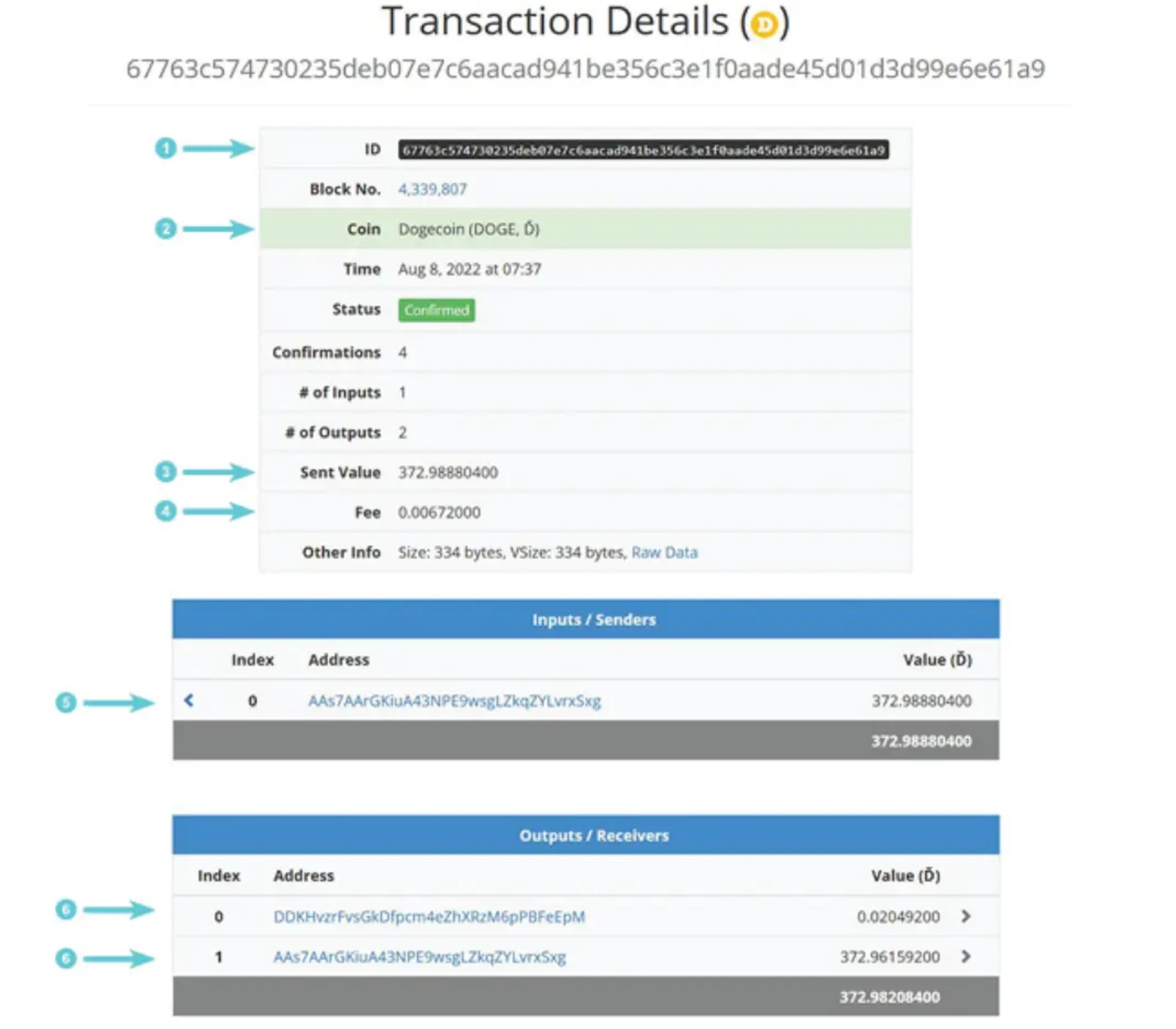What is dogecoin mining?
People who ”mine” dogecoin are actually helping to create new dogecoins and are also helping to secure the credibility of the blockchain.
Dogecoin mining covers two topics:
- How new dogecoins are produced
- How the authenticity of data on dogecoin’s blockchain can be considered credible
The word “mining” means digging, and is a reference to gold digging. Not too long ago, the world’s economies were tied to the amount of gold that could be stored in national banks’ reserves.
To expand our economies, we had to send gold diggers out to the mines to procure it.
Dogecoin works in the same way. To expand the dogecoin economy, there needs to be a dedicated group of people mining it.
However, dogecoin mining doesn’t demand strong arms, like digging for gold would, but instead it demands advanced software and strong computers.
On top of that, mining is also an important part of the blockchain’s technological infrastructure. It’s through mining that new blocks are being created, validated and added to the blockchain.
Dogecoin mining = the issuing of new coins + securing the blockchain network.
That’s how it works for proof-of-work blockchains, which dogecoin is. Other proof-of-work blockchains include bitcoin and ethereum , but there are also many other blockchain systems.
Take cardano for example, which uses proof-of-stake , and solana , which uses proof-of-history. These types of cryptocurrencies do not “mine” their coins in the same way as dogecoin does.
To get an even better understanding of dogecoin mining, we’ll be diving into two central elements: Proof of work and hashing.
Proof of work
Proof of work is the method dogecoin uses to validate new additions of data to the blockchain - namely, transactional data.
When you purchase something using dogecoin, the transaction will consist of certain information. This is for example your name, the seller’s name, transaction amount and so forth.
All of that information is data which can be encrypted with hashing. Dogecoin uses the hashing method Scrypt, where bitcoin uses SHA-256, and ethereum uses Keccak-256.
Tip: Read more about bitcoin mining and ethereum mining here.
Scrypt is a less complicated and therefore less energy intensive hashing method than SHA-256 for example. That’s why dogecoin can also validate far more transactions (or blocks of transactions) per hour than bitcoin can.
Dogecoin can validate about one block per minute, while bitcoin validates around one block every 10th minute.
When data is encrypted with hashing, you’re no longer able to “understand” the information. Here is an example of a dogecoin transaction that’s been encrypted:
67763c574730235deb07e7c6aacad941be356c3e1f0aade45d01d3d99e6e61a9
Because dogecoin’s blockchain is publicly available, you can always check an encrypted transaction in a blockchain explorer - which is a database and a reference work for all transactions who have ever been registered on dogecoin’s blockchain.
Try to type in the encrypted dogecoin code on chain.so for instance, which is a blockchain explorer. Here, you’ll be able to see what amount there’s been traded with, and who is the sender and receiver - the amount isn’t private, but sender and receiver are encrypted with Scrypt, so you can’t see who actually performed the transaction.
To keep the blockchain alive, it takes a larger collection of dogecoin transactions collected in a block, which in itself has a certain hash.
Example: Dogecoin’s block number #4341556 looks like this:
f7b2edab812a8b5d551fc80bd10421acdf591a06606c4f852409aab6cb3fd2b2
The block’s hash is very important here. Without a hash for the block, the block wouldn’t be able to be added to the blockchain, and the blockchain will thus come to a standstill. No more dogecoins will be brought into circulation, and new dogecoin transactions will not be able to be validated.
In order to make it attractive for people to spend their time adding transactions and blocks to the blockchain, those people will be rewarded a certain amount of dogecoins as thanks for their trouble. The dogecoins the person receives as a reward, are newly minted dogecoins, which haven’t existed prior to this. They’ve just been “mined”.
Hashing
But how does a dogecoin miner find the exact 1:1 hash to match the new block?
They do so by “guessing”. And this is where the strong computing powers enter the picture.
A hash consists of 64 characters, where the characters can be numbers 0-9 and letters A-F.
Let’s look at the example from earlier:
67763c574730235deb07e7c6aacad941be356c3e1f0aade45d01d3d99e6e61a9
There aren’t any leads to help you guess this code. It’s completely arbitrary. So to find that hash, the dogecoin miner needs to make a lot of guesses. A very strong computer - such as “The Titan supercomputer” - would be able to guess 140 million hashes per second.
That’s why it’s only a matter of time before the computer finds the correct string of code (hash) that matches the new block of the blockchain.
Example: How a dogecoin transaction could look
In the image above you can see a dogecoin transaction found via Chain.so – a so-called block reader, making it possible for everyone to see all transactions registered on dogecoin’s blockchain.
You could try searching for the example above by opening Chain.so in your browser and search for the transaction code:
67763c574730235deb07e7c6aacad941be356c3e1f0aade45d01d3d99e6e61a9
See what the information covers in the walk through below.
1. ID
The ID is the name of the transaction. That’s the encrypted code we described earlier. As you can tell, the code is very long and cryptic. You could say that the code is the reference number for each transaction.
2. Coin
Here, it’s noted which coin has been used in the transaction. In this instance, it was dogecoin.
3. Amount
In the example, 372,99 dogecoins have been transferred. Dogecoin’s rate as of August 2022 was 0,52 DKK, and the amount was approximately 193,50 DKK.
4. Fee
There’s a fee charged to use dogecoin’s blockchain for transactions. The size of the fee is noted here, and in this example the fee is 0,007 dogecoins, which is about 0,0036 DKK.
5. Sender
As you can see, the sender is identified with an “address”, which covers the code name of the sender’s wallet.
6. Recipient(s)
The same goes for the recipient. In the example above there are two receiving addresses. Whether it’s the same person or a completely different person, we can’t know - and it’s not something dogecoin can tell you. But we can ascertain that a transaction between those two addresses occurred.
Recap:
Transactions: Each dogecoin transaction results in a certain hash.
A hash: Dogecoin uses the hashing method Scrypt.
Blocks: A block on the blockchain consists of a larger collection of the hashes from dogecoin transactions.
The block’s hash: A collection of transactions, here called a block, is a long string of information. The block can then be encrypted with hashing in the same way as the individual transactions can.
Production of new dogecoins: When a person/computer guesses the hash of a block, they’re being rewarded with a certain amount of dogecoins as a reward for their work.
Alternatives to proof of work: Proof of stake
Looking for the correct hashes takes an incredible amount of computing-power. The more computing power you have, the more hashes you can guess per second - and that increases your chances of being rewarded with crypto.
It also means that people with a lot of money can invest in strong computers to then increase their chances of finding the next hash.
That creates an imbalance where it's the most financially advantaged people who mines the most dogecoin - making them even richer.
Besides that, mining with a super computer is quite power-intensive, which isn’t exactly climate friendly.
A last, but substantial issue with proof-of-work is the limited scalability. As mentioned previously, dogecoin validates around one block per minute, where bitcoin validates one block around every ten minutes. For dogecoin, that equals about 33 transactions per second, and for bitcoin, that’s 7 transactions per second.
Should cryptocurrency become the new global payment system, it’s not sustainable that only 7 or 33 transactions are being completed per second. In comparison, Visa completes around 1,700 transactions every second.
By changing the validation method from proof-of-work to proof-of-stake for instance, the amount of transactions can be increased significantly. Solana , which uses proof-of-stake, is, among others, developed for the exact purpose of scaling the amount of transactions. The cryptocurrency is theoretically developed to handle up to 65,000 transactions per second.
Buy and sell dogecoin, solana and other popular cryptocurrencies.
Cryptocurrencies can rise and fall
When you trade cryptocurrencies, you need to be aware that it carries a large risk. The value of your cryptocurrency can both rise and fall, and you can risk losing the entire amount you’ve invested in cryptocurrencies.
Cryptocurrency trading is done through Lunar Block. Lunar Block is not regulated by the Danish Financial Supervisory Authority (Finanstilsynet). That means you won’t have the same protection as when trading e.g. stocks or other regulated assets.
We do not counsel
We do not advise on currencies and do not make recommendations for either buying or selling. We can provide factual information about the different currencies, but past price developments are not an indication of future developments.
No information from Lunar Block should therefore be considered as recommendations and all decisions are up to you alone.
Last updated April 18, 2023. We’ve collected general information. Please note, that there may be specific circumstances that you and your business need to be aware of.
You might also like...
Where can I pay with solana?
Cryptocurrency is becoming so widespread and acknowledged abroad that you can use the currency just like regular payment methods on some...
How do you buy solana as regular stocks?
Because solana (SOL) is a currency, and not a business, you can’t actually invest directly in solana like it’s a stock.
Are cryptocurrencies a good investment?
Cryptocurrencies can be a great addition to your portfolio - if you’re willing to run the risk. Cryptocurrencies are “high risk - high...
What is bitcoin?
Bitcoin is a digital currency, or cryptocurrency, as it’s also called. Bitcoin is the first and largest cryptocurrency measured on market...



